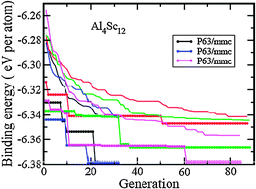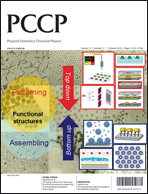Comparing efficiencies of genetic and minima hopping algorithms for crystal structure prediction†
Abstract
In this work several crystal structure prediction problems which have been studied by first-principles evolutionary algorithms recently are revisited. We increased the system size to see how the search efficiency changes with respect to problem size. We find that the relative performance and underlying mechanism of genetic algorithms in crystal structure searches for


 Please wait while we load your content...
Please wait while we load your content...